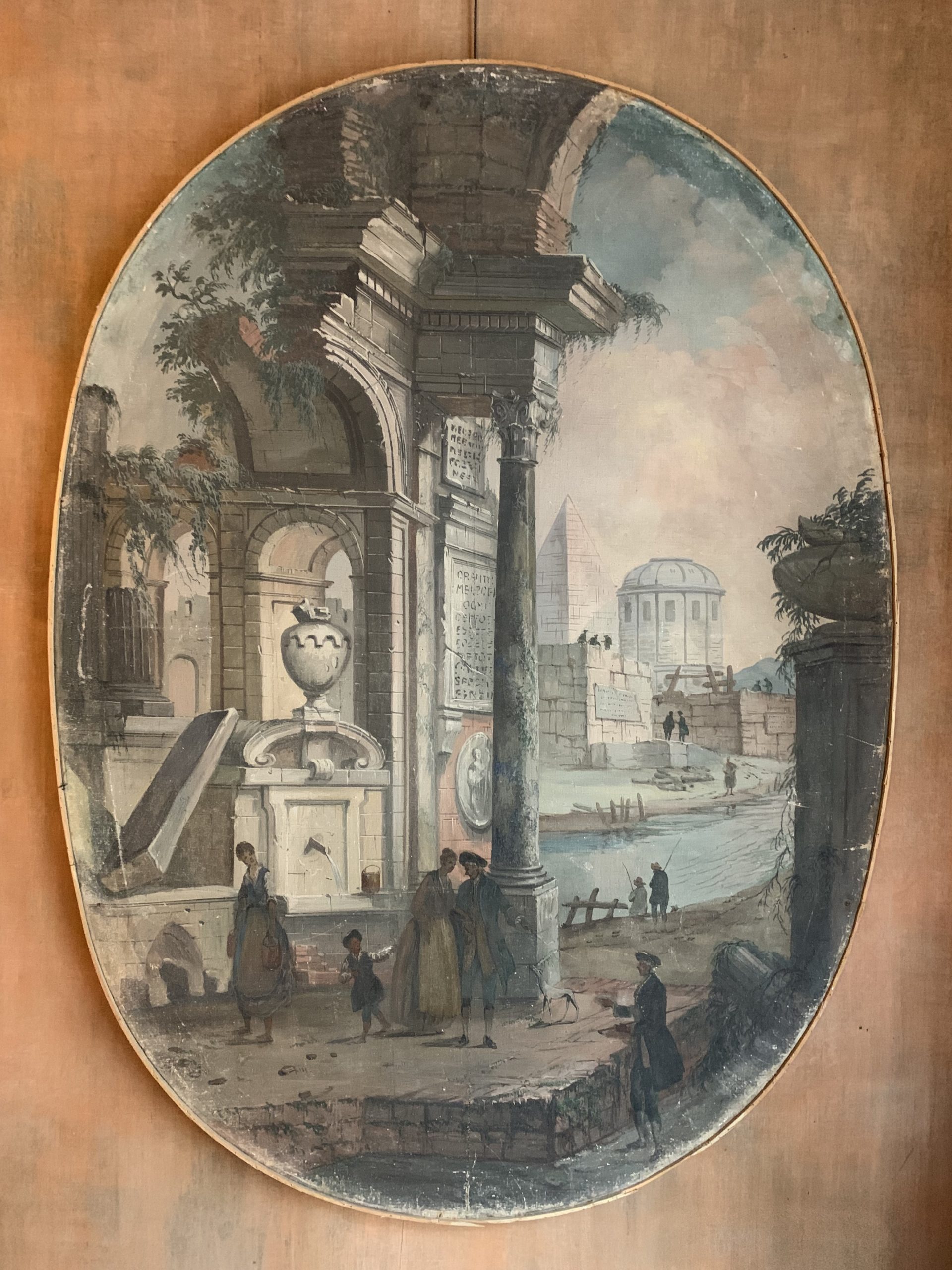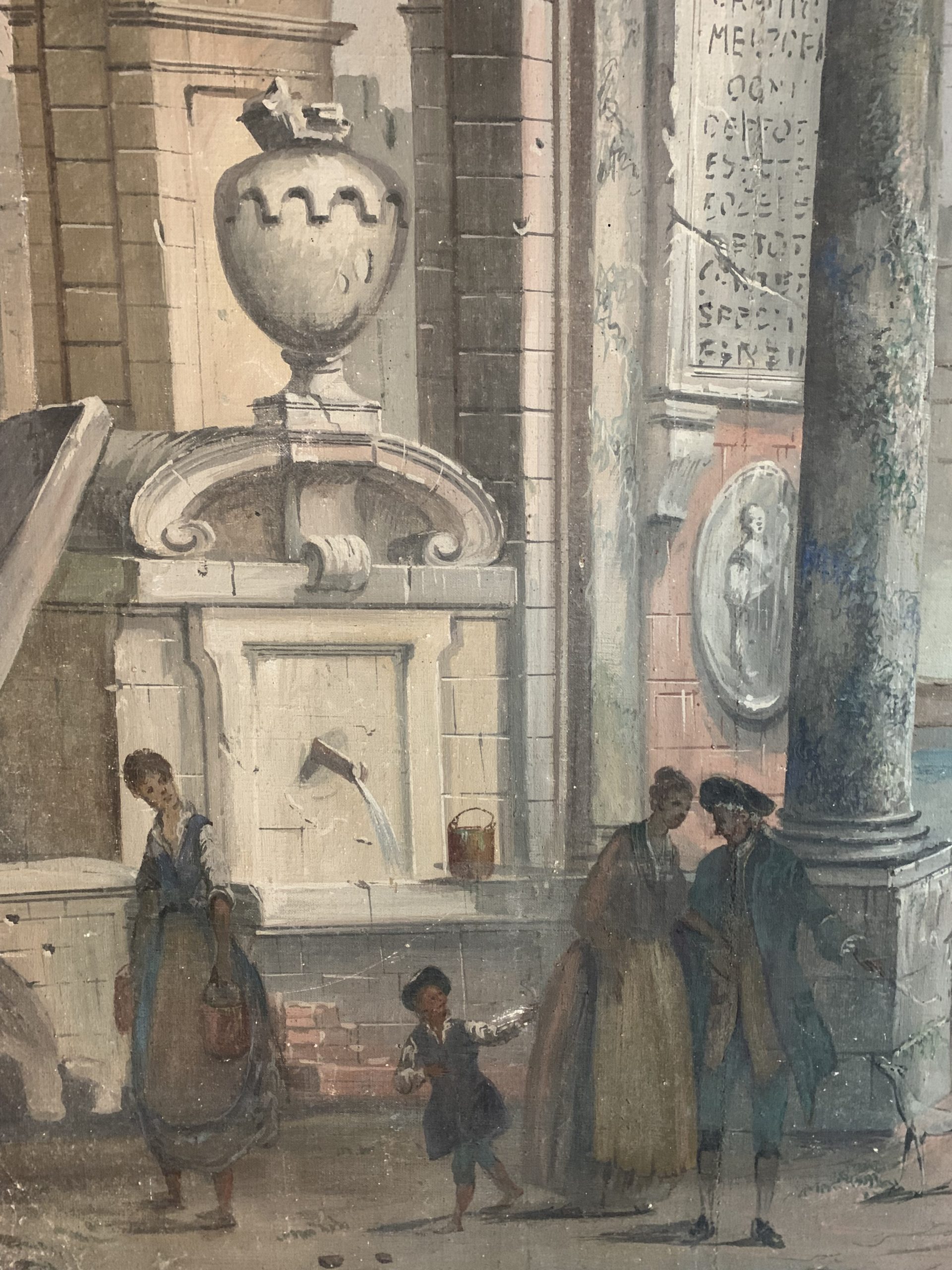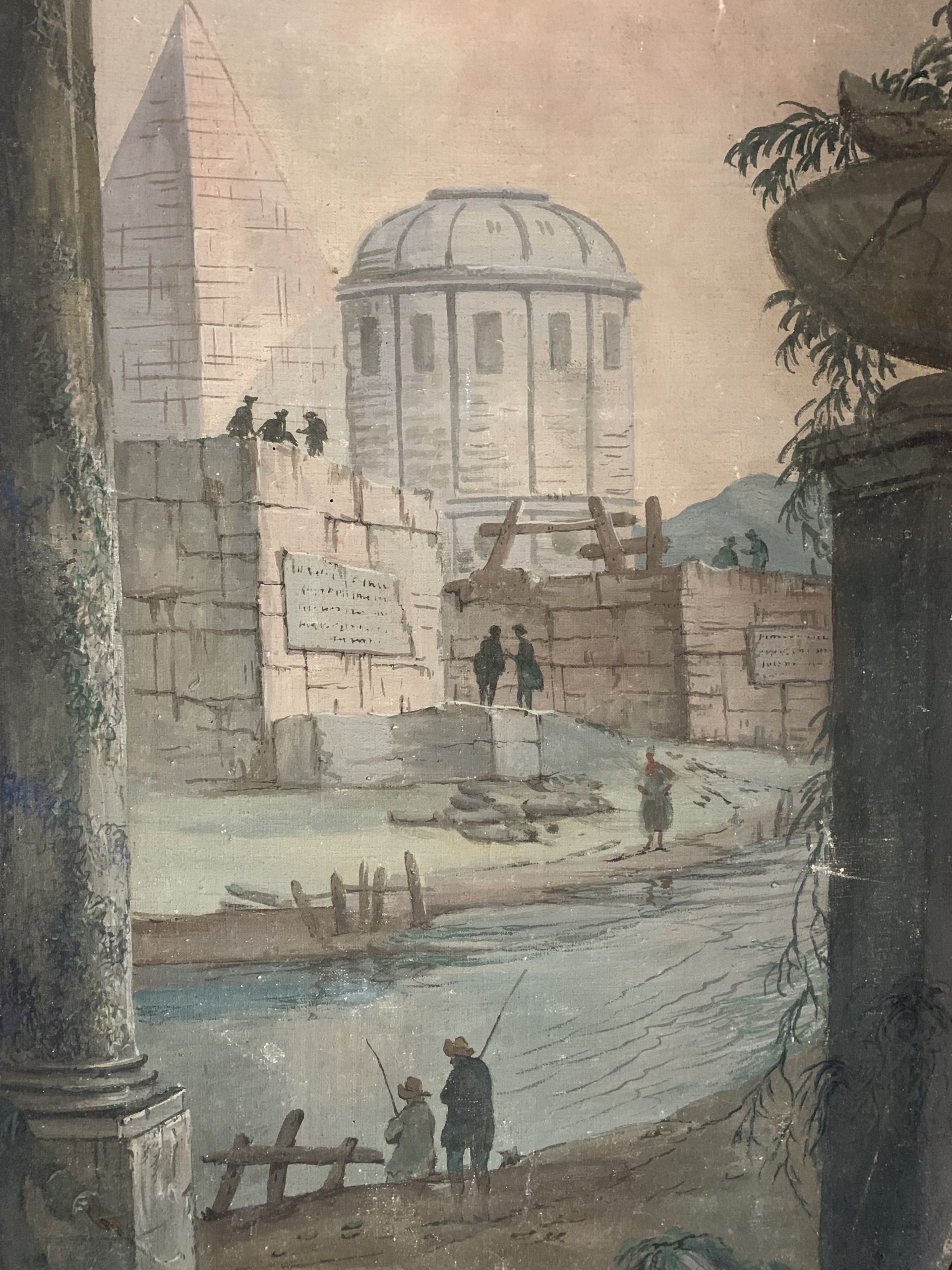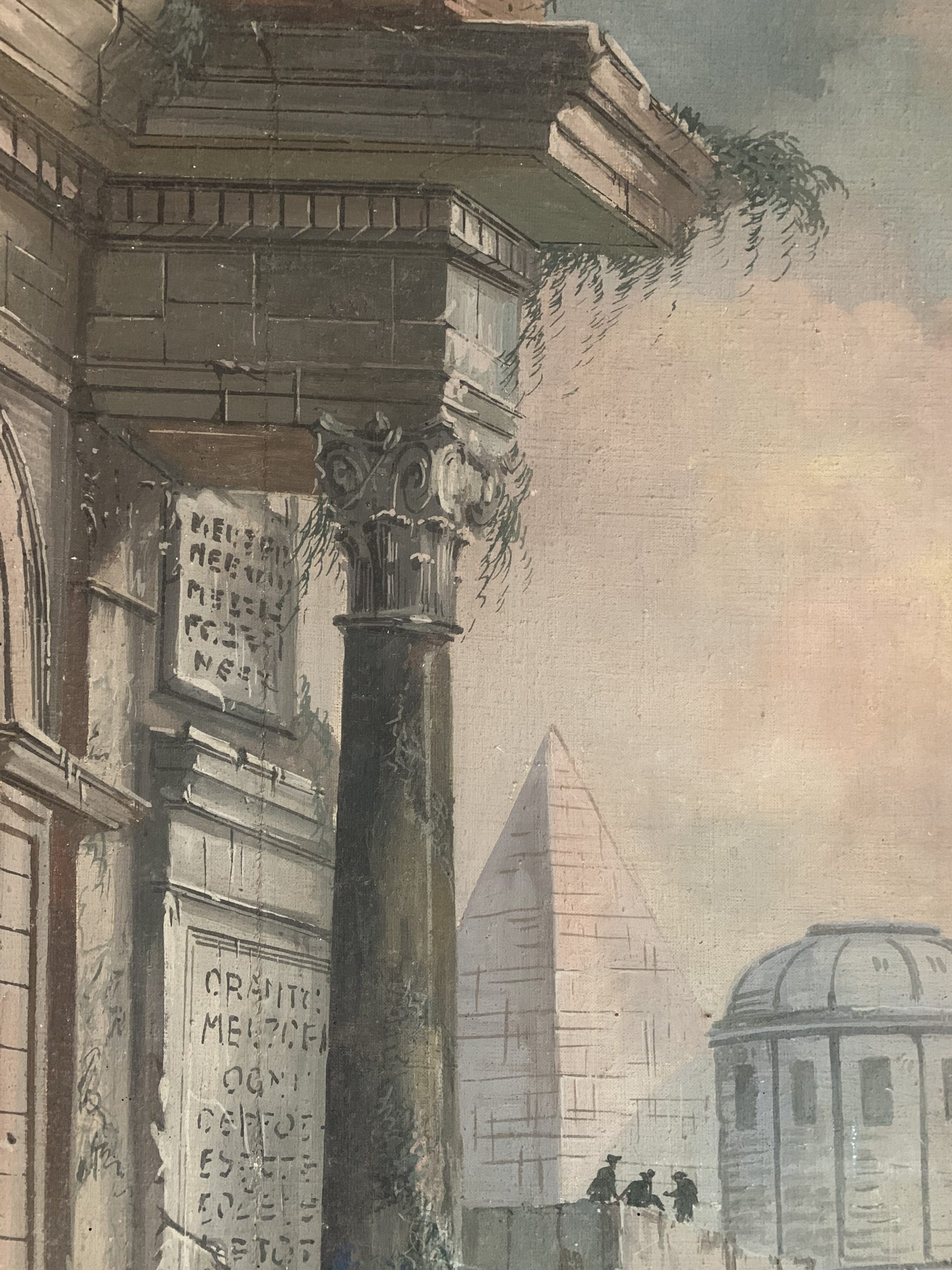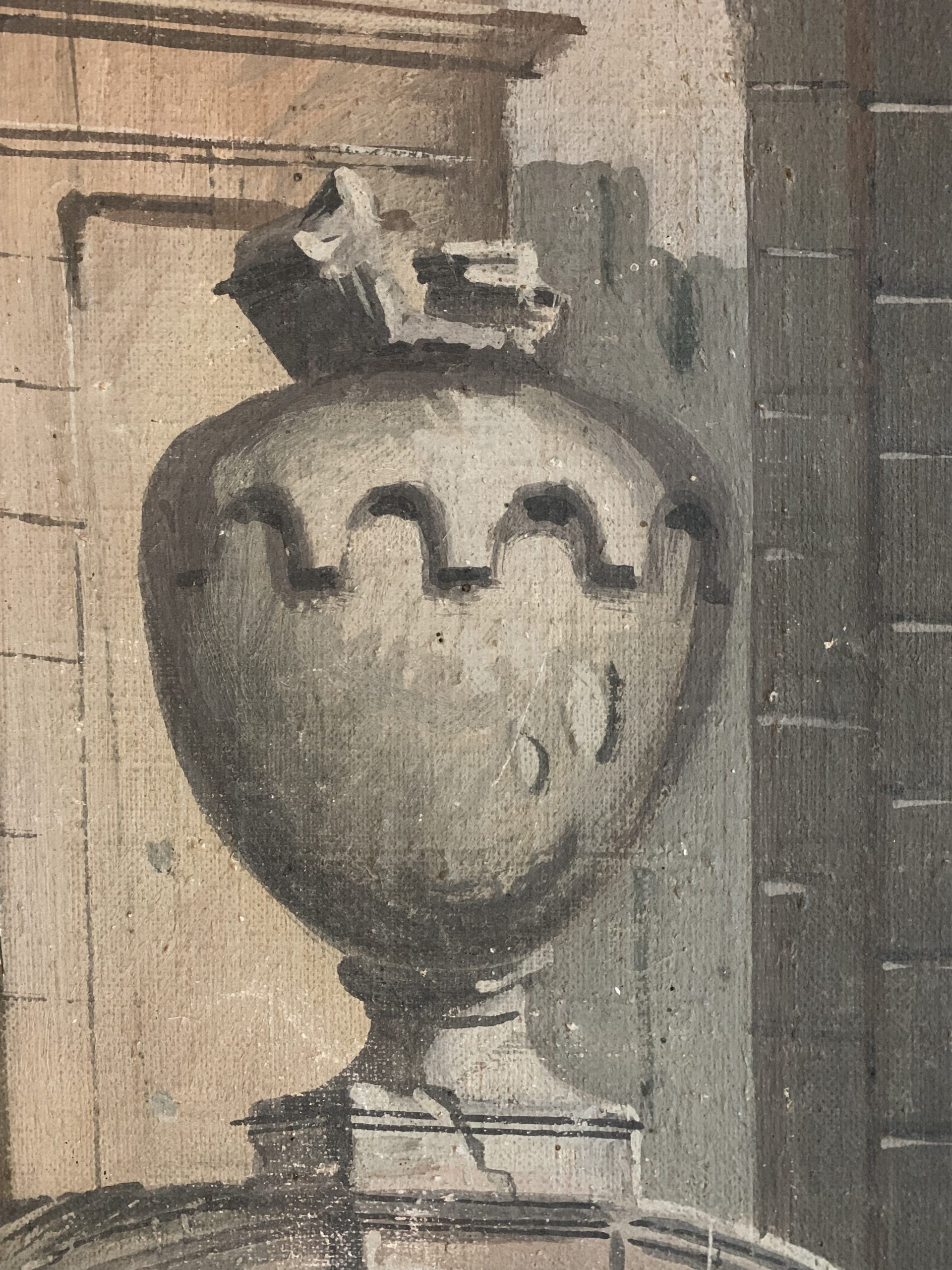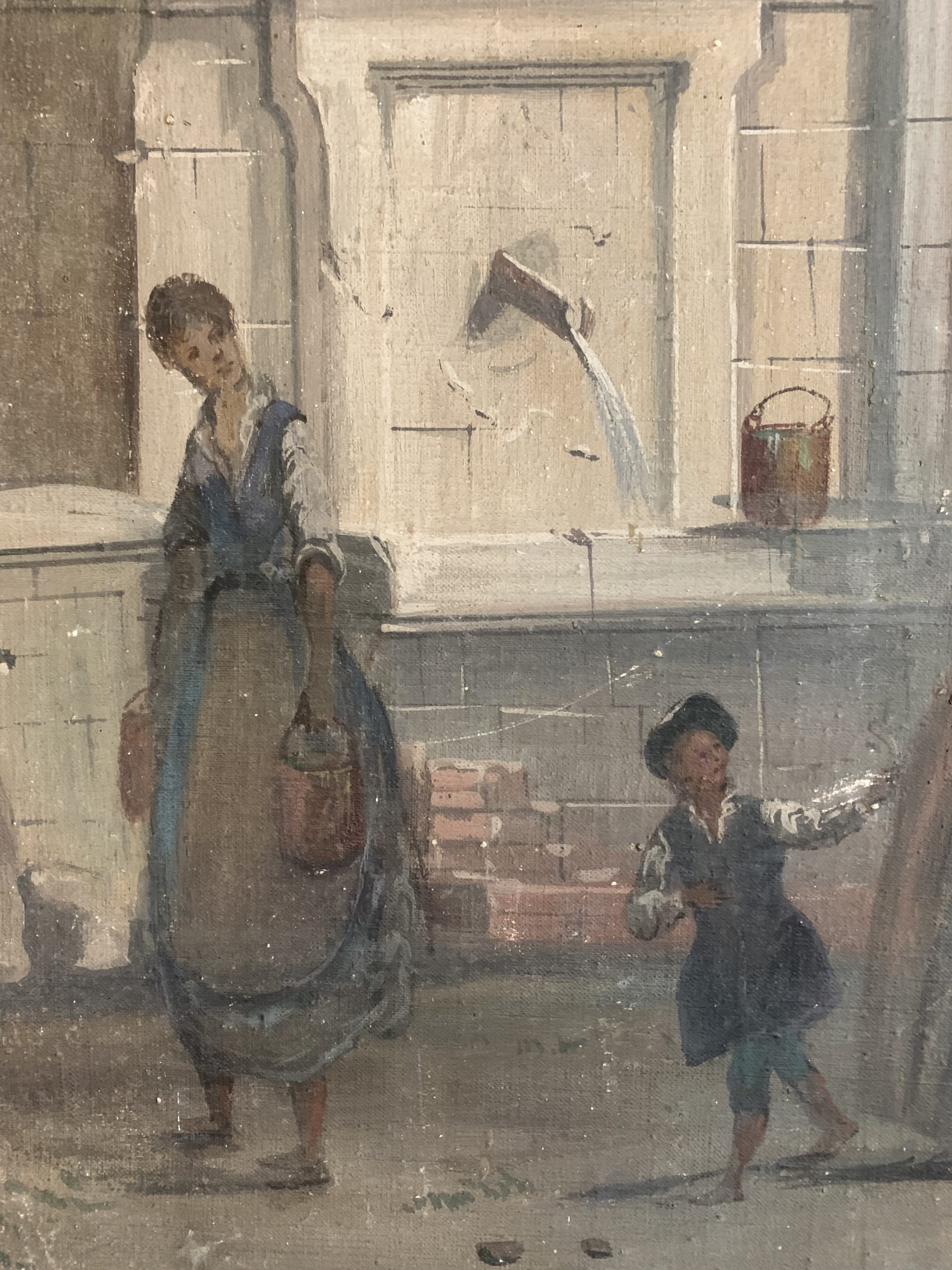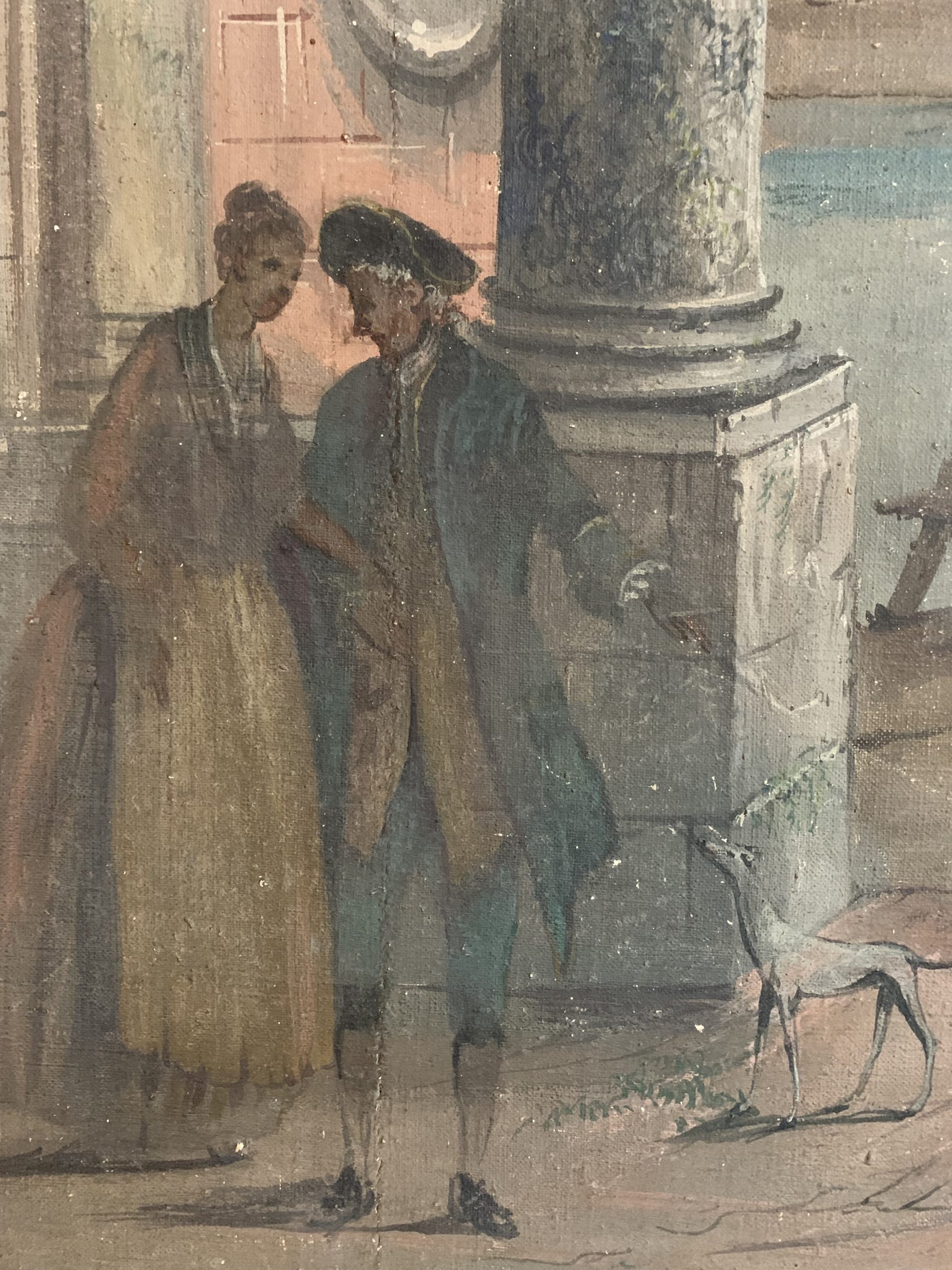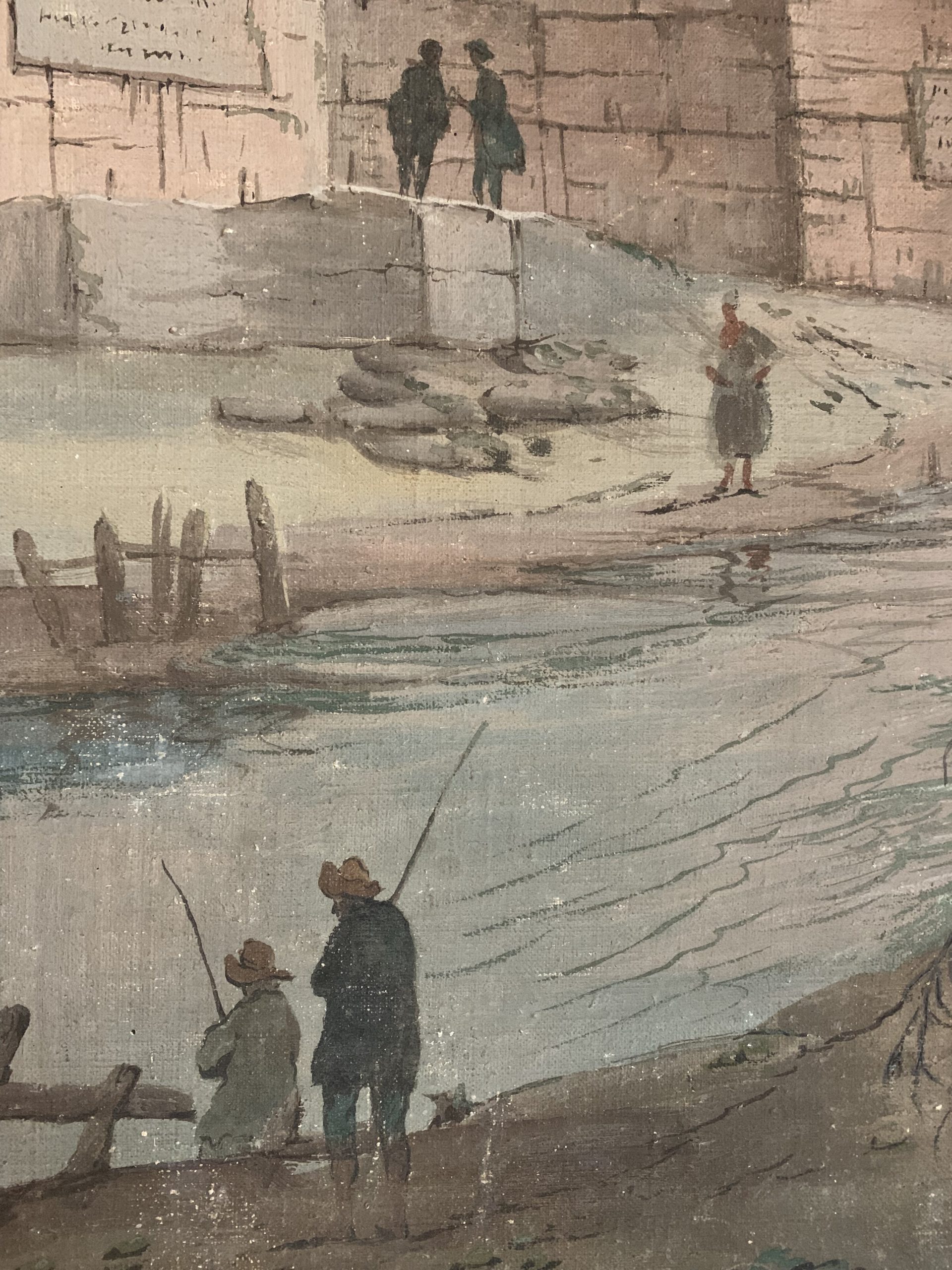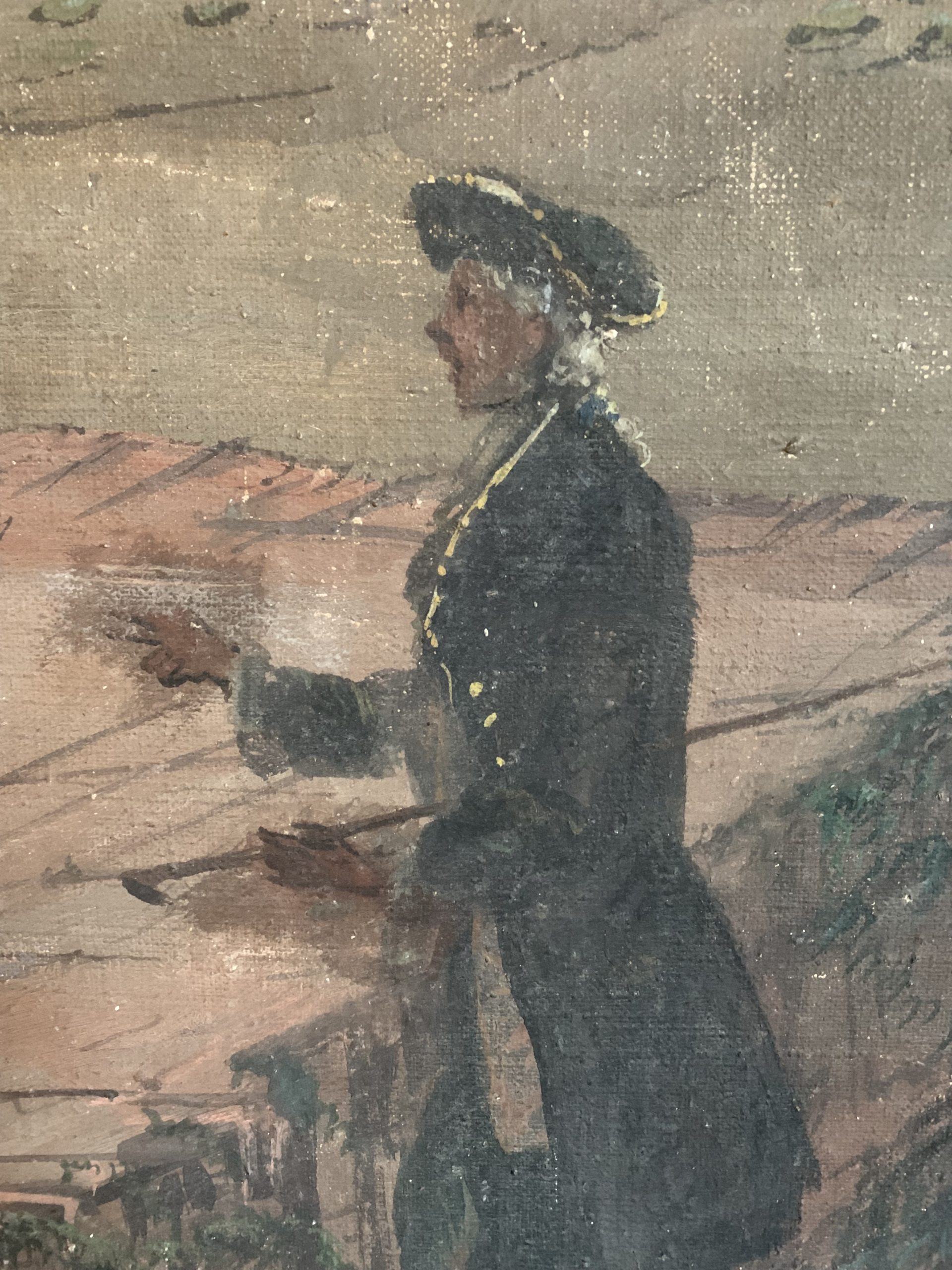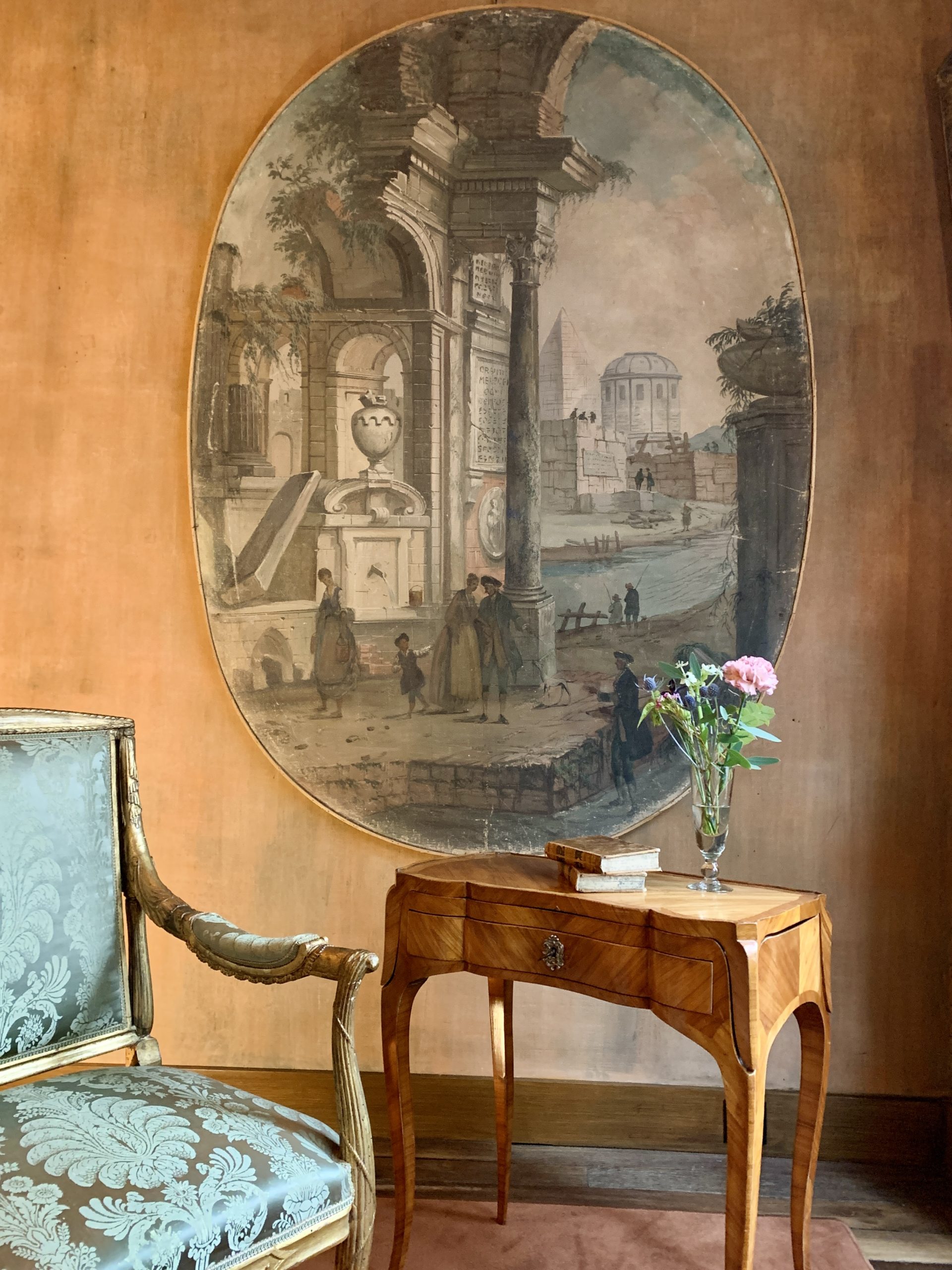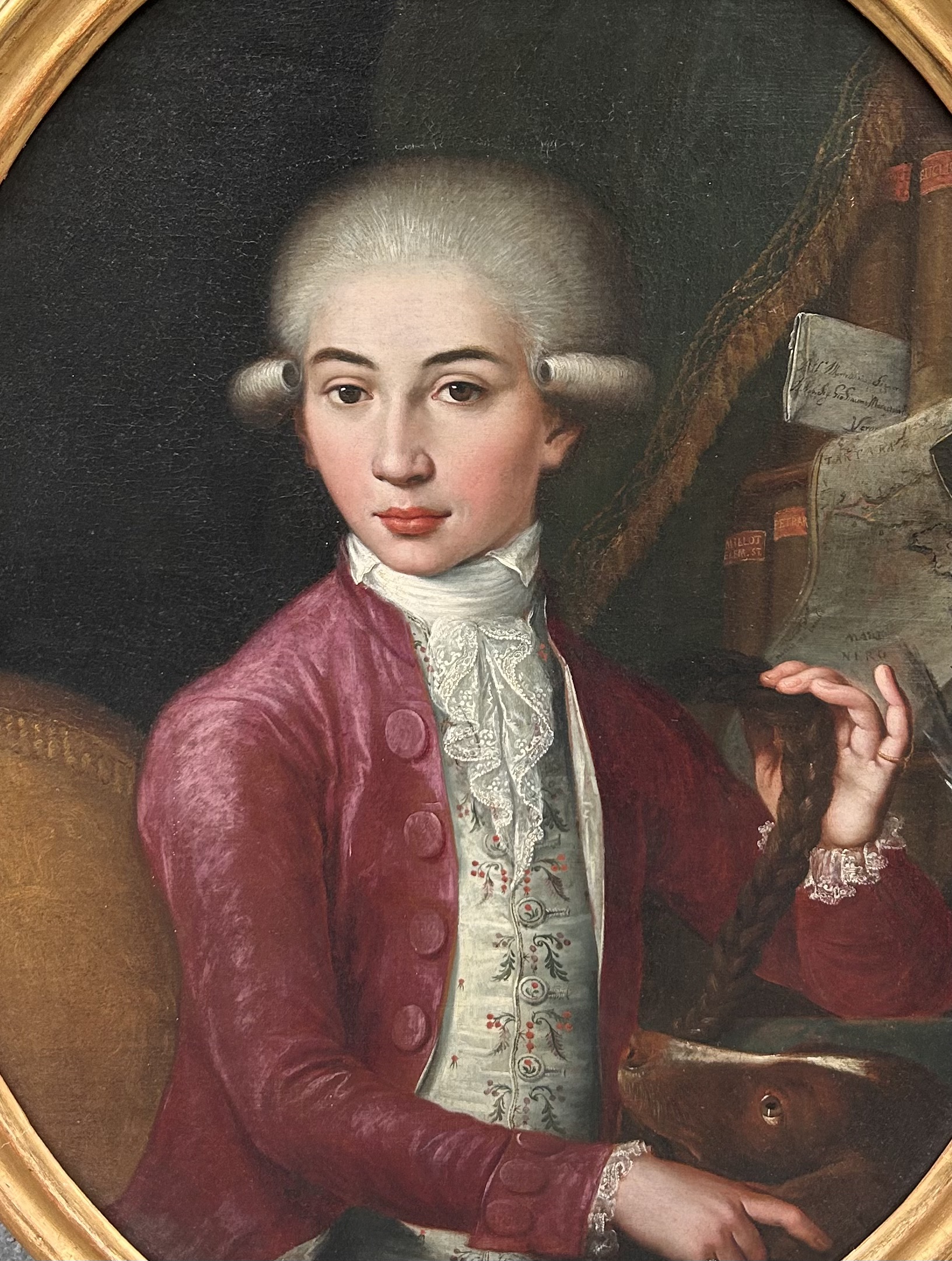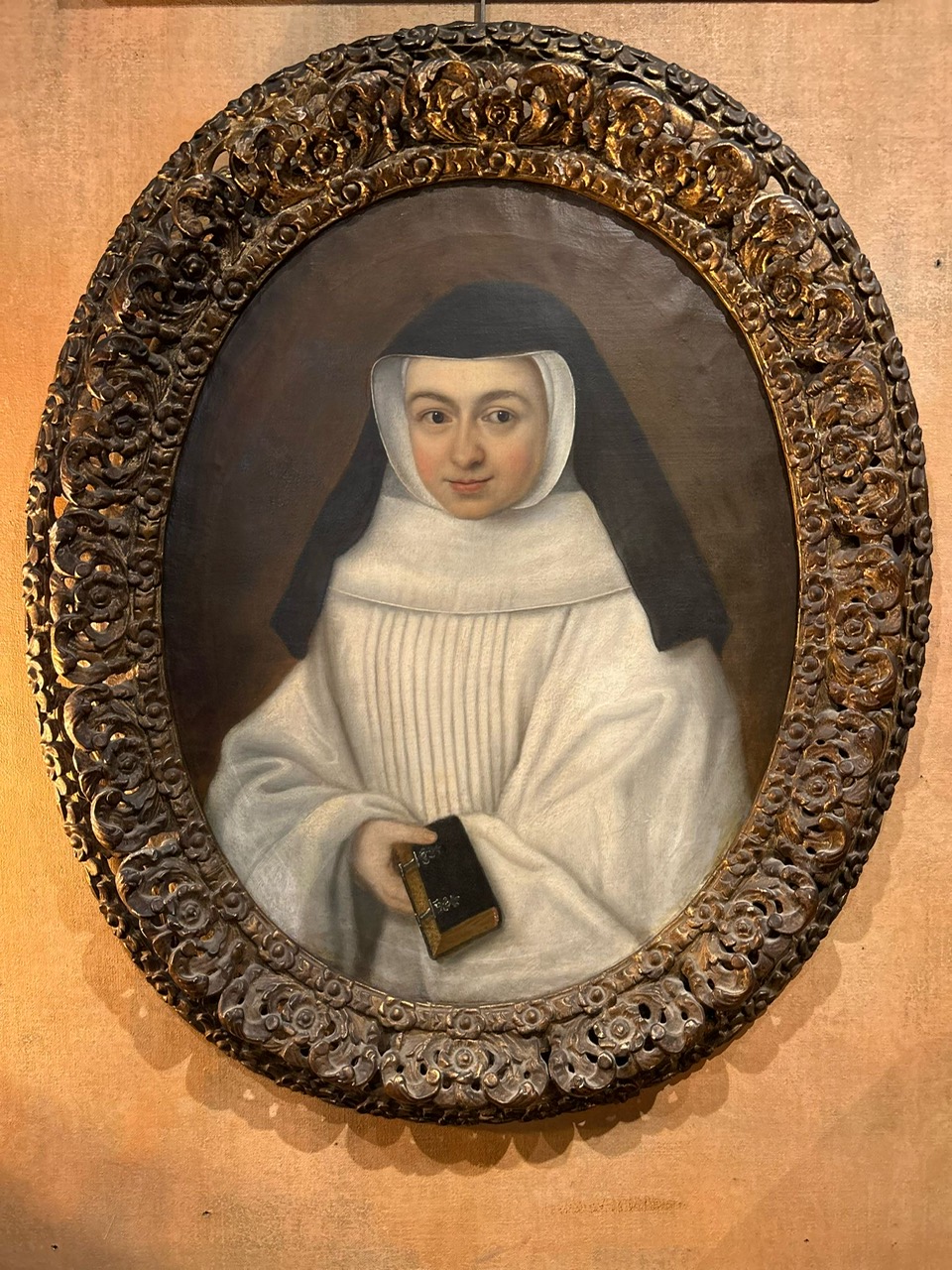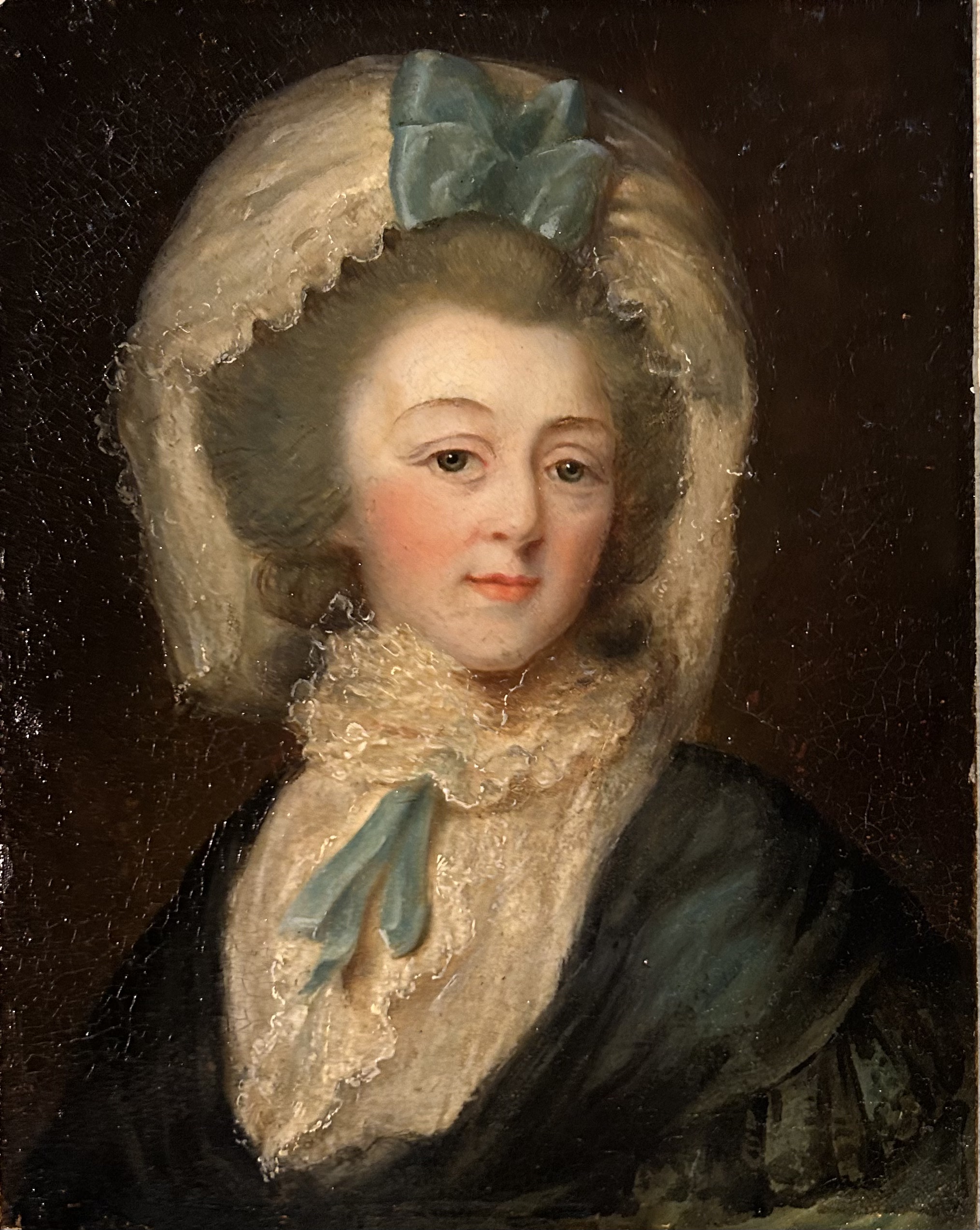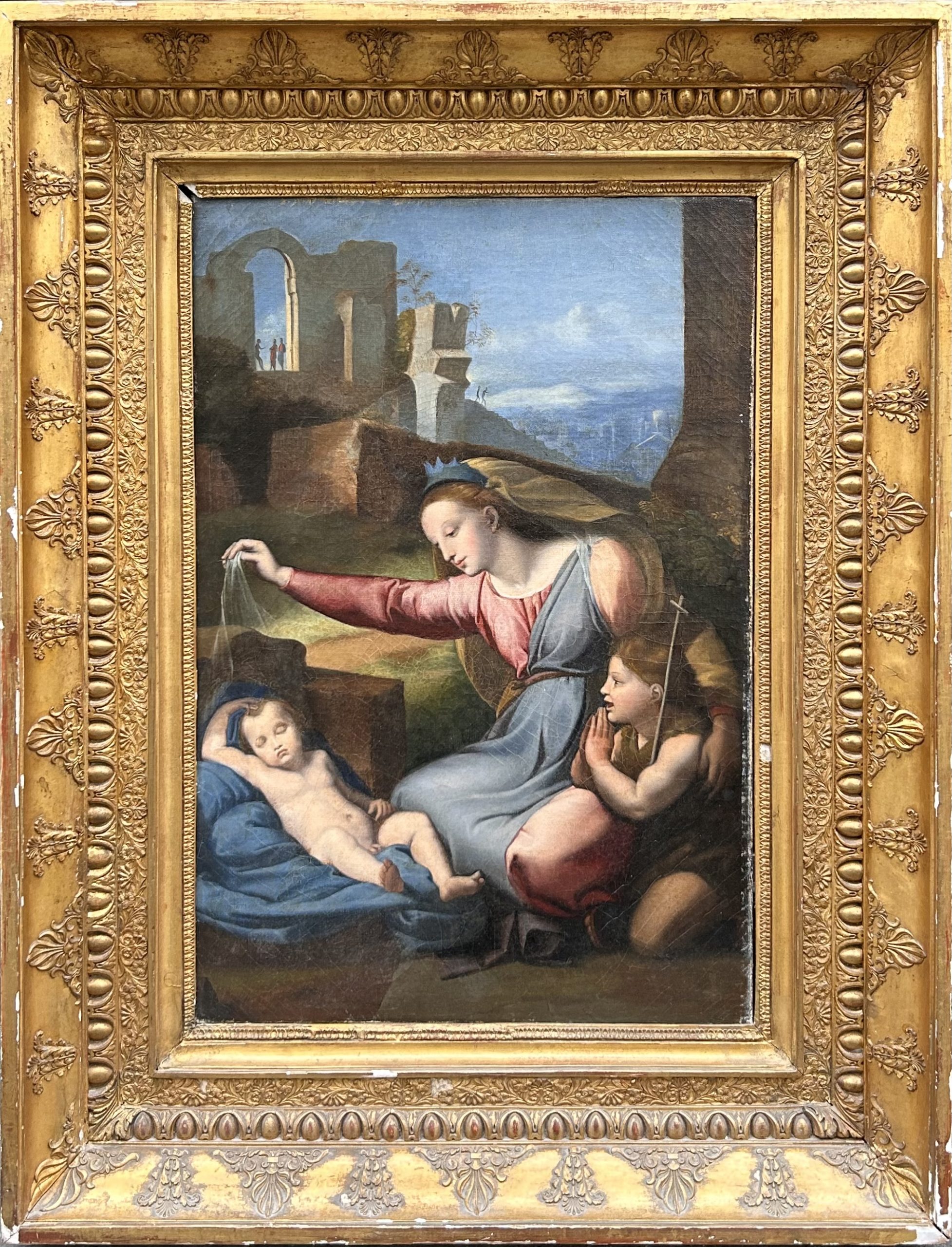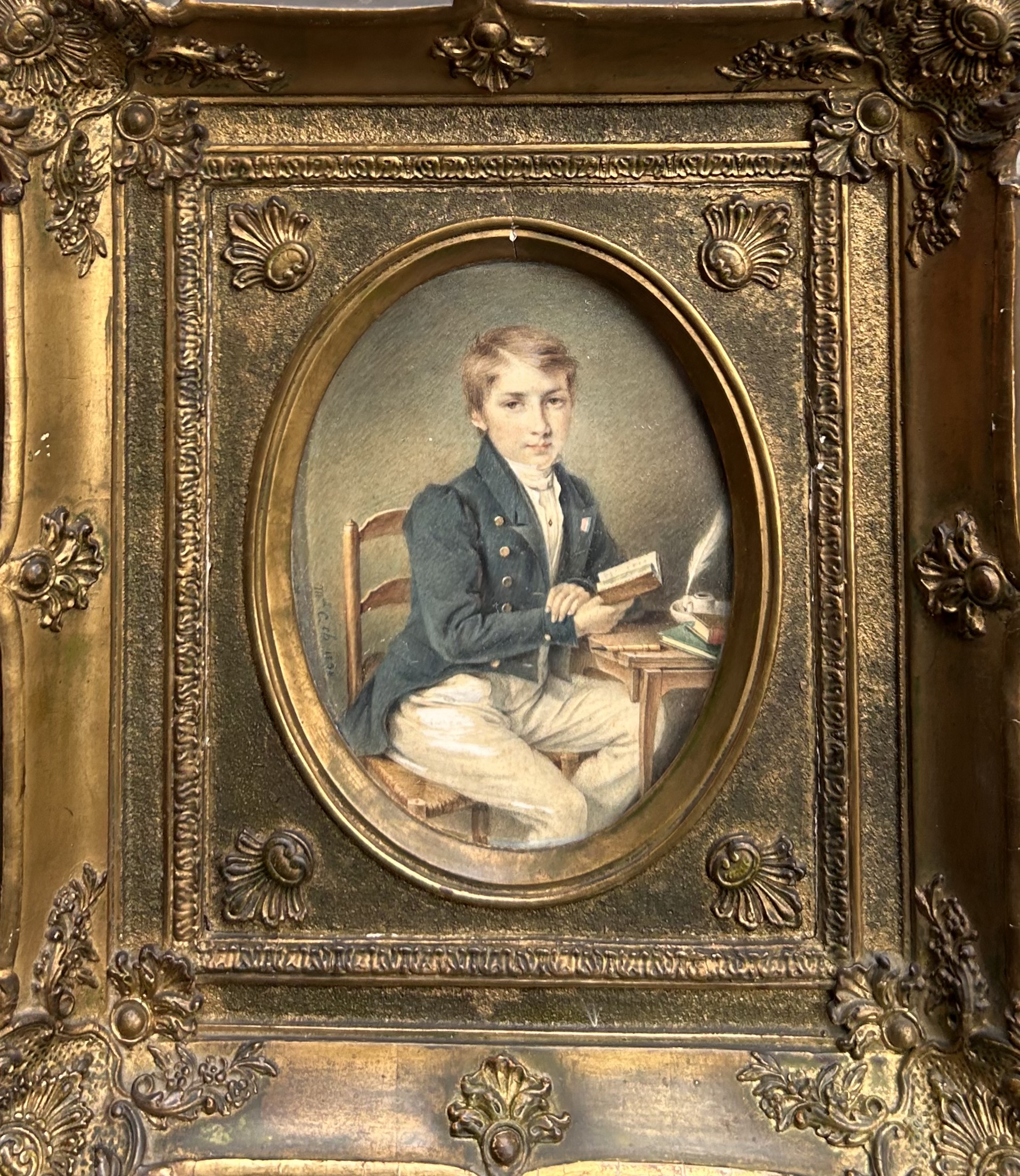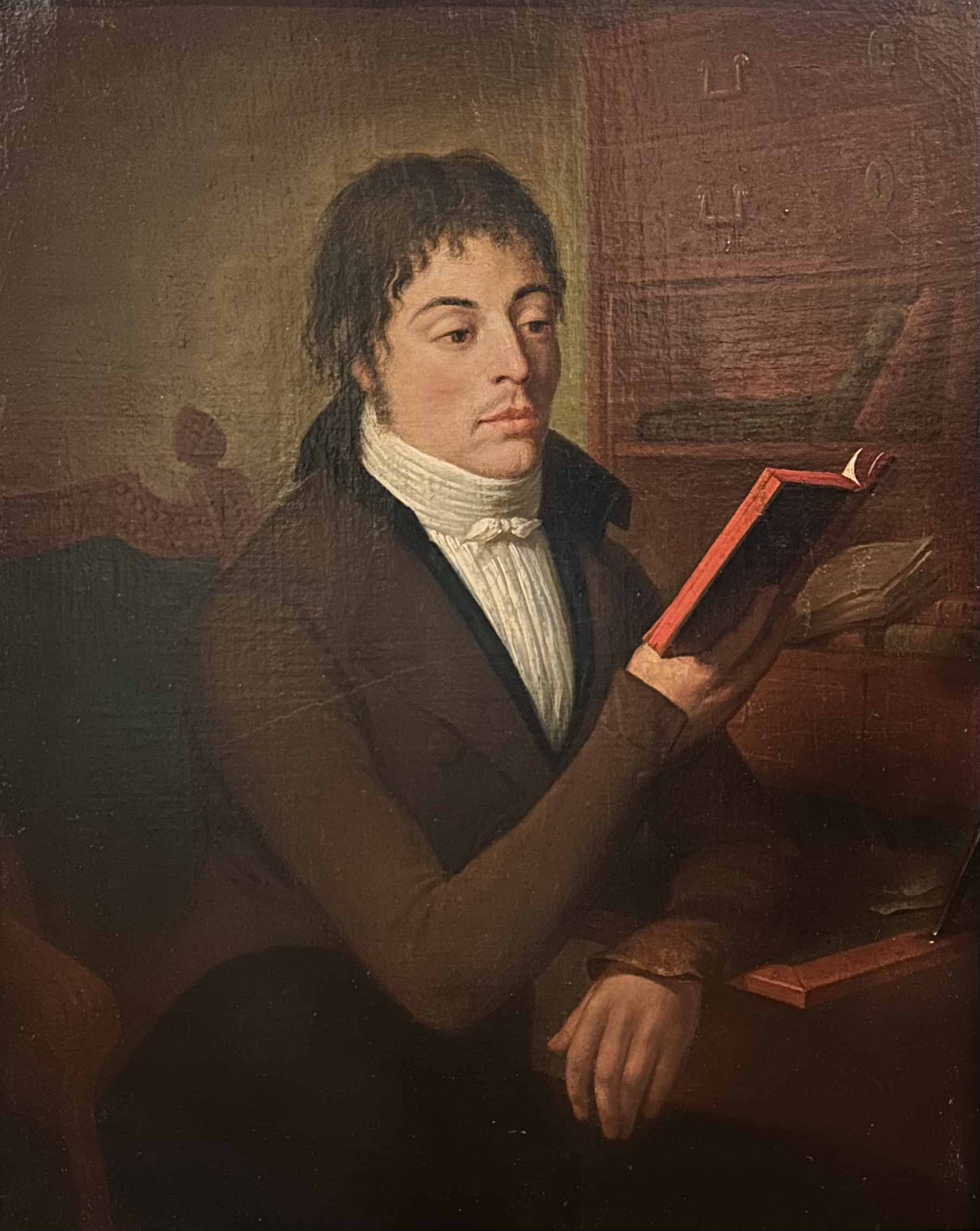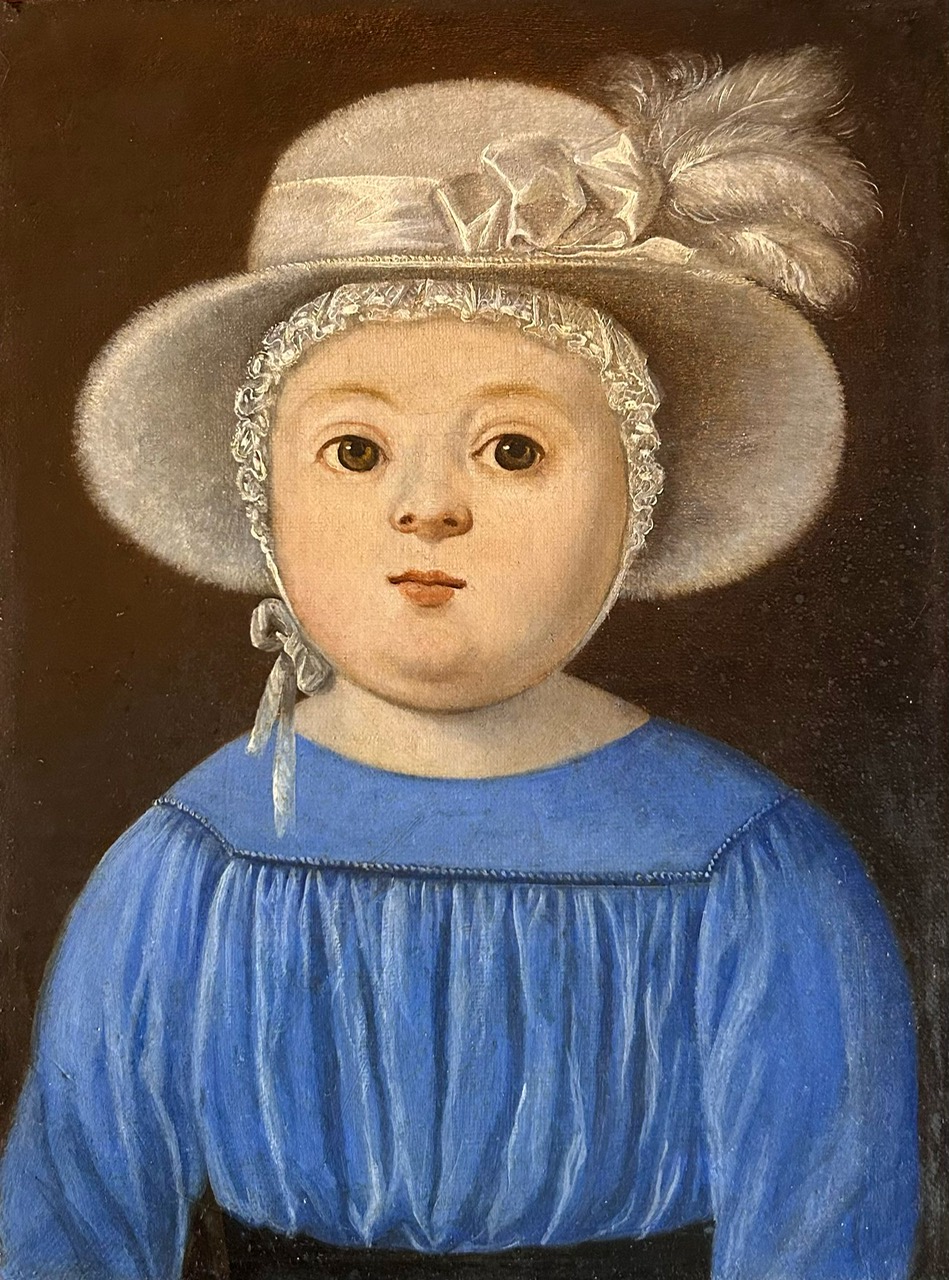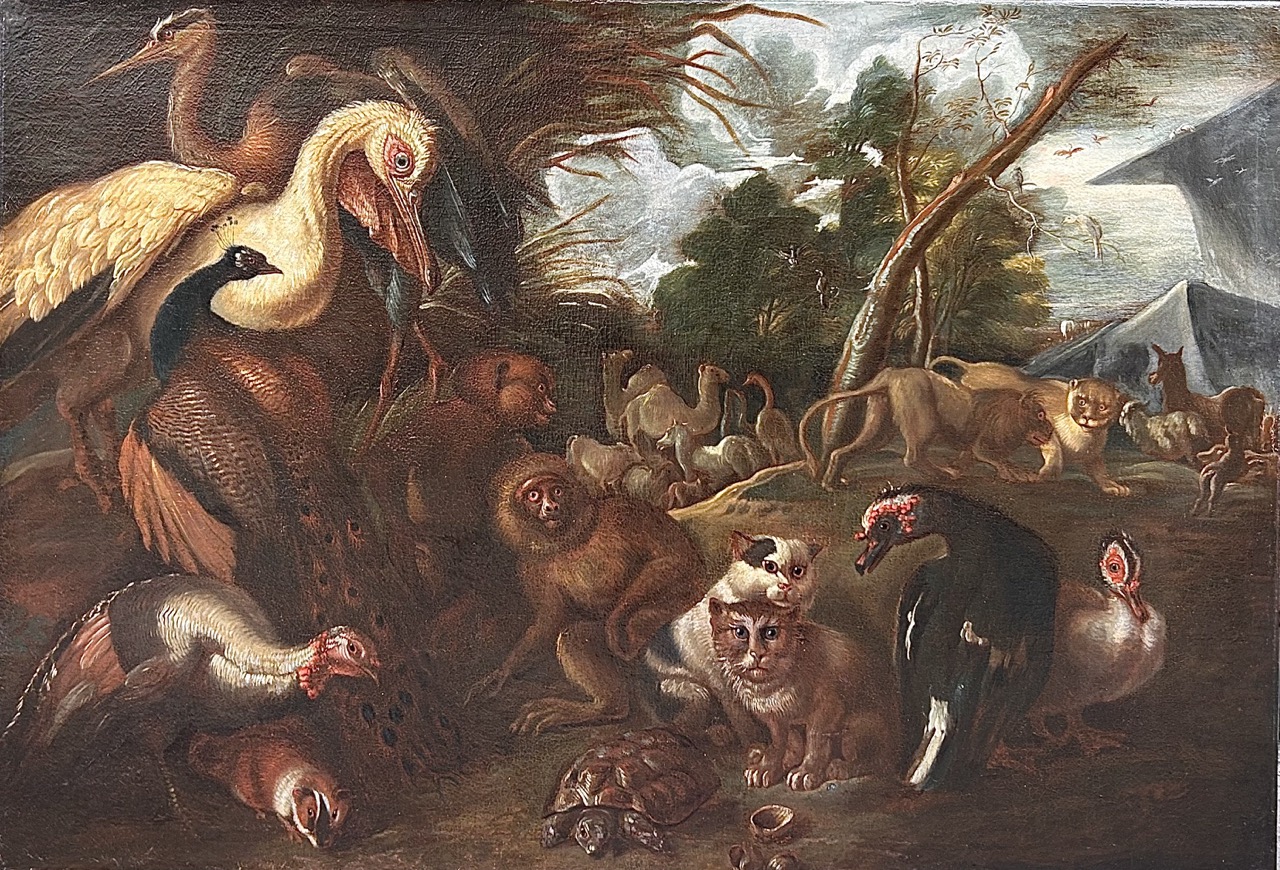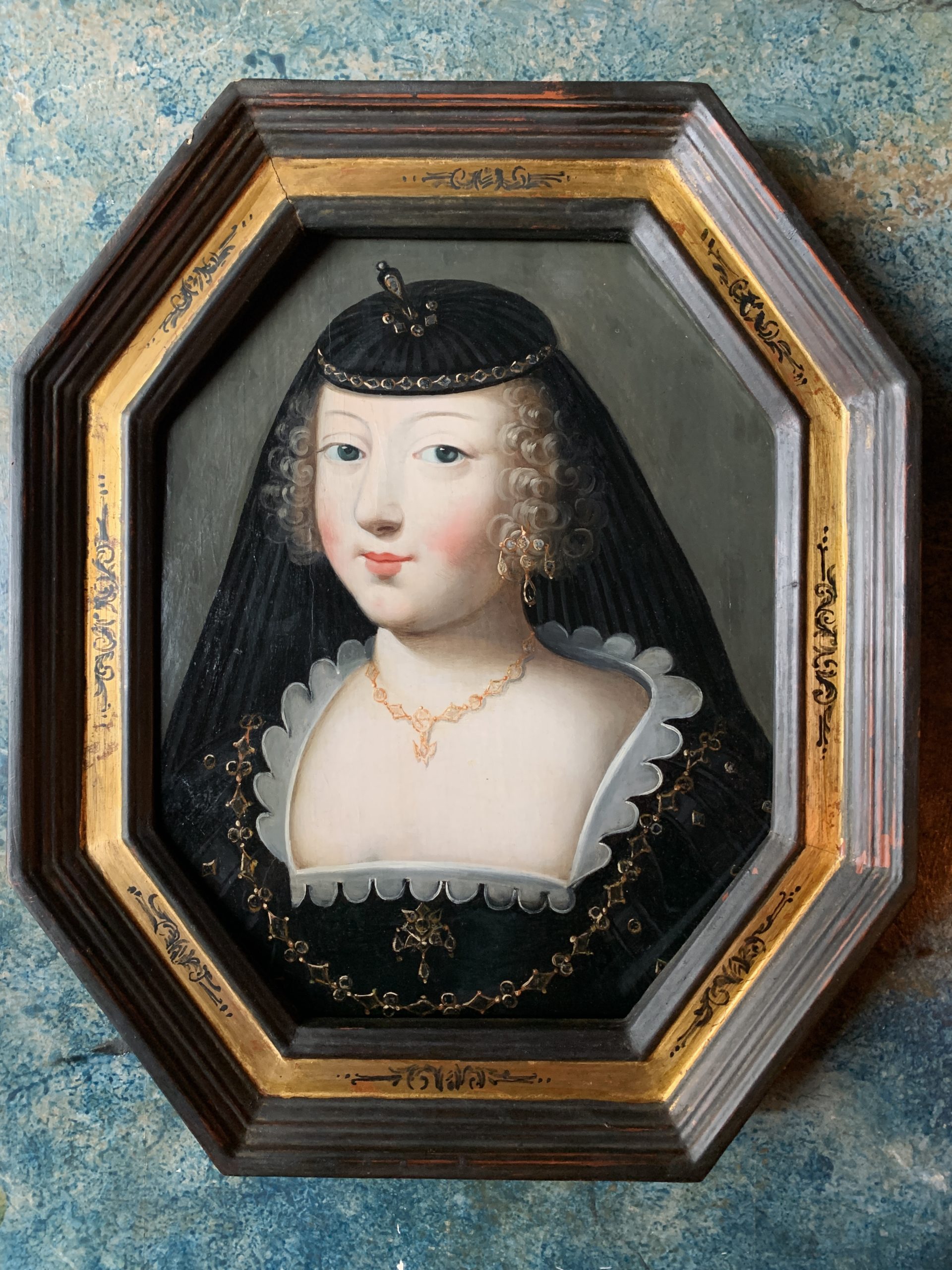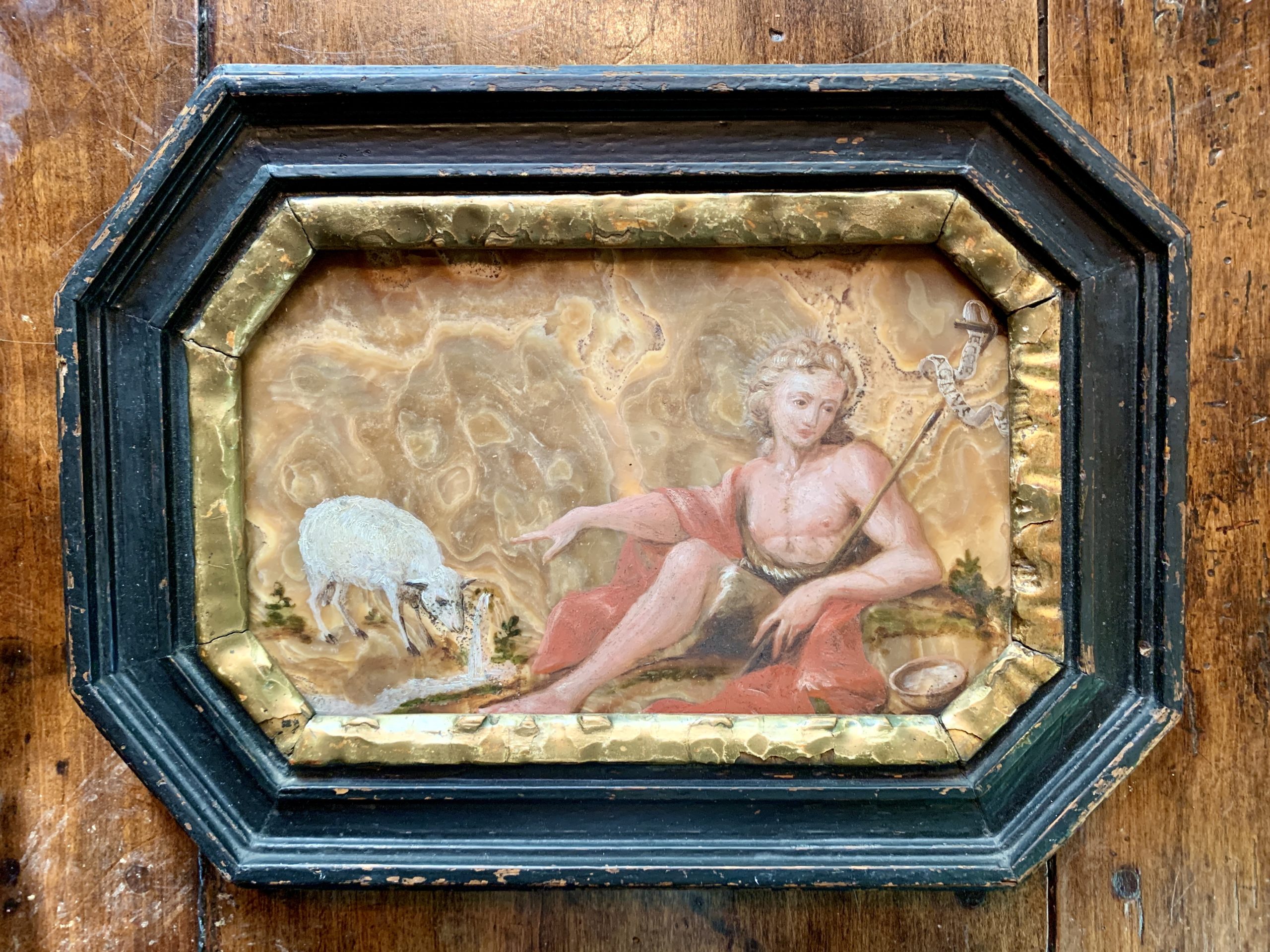Large oil on canvas representing a capriccio.
A capriccio, or architectural whim, is, in painting, the representation of an imaginary or partially imaginary landscape, combining buildings, ruins and other architectural elements in a fictitious and often fantastic way, sometimes with staffage (the term refers to human figures and animals of a painting, particularly in landscapes, which are not the main subject of the work). Capriccio, of Italian origin, is mainly encountered around the 18th century, where it opposes the register of vedute pictorial genre based on the representation of real urban landscapes.
Towards the middle of the 18th century there appeared a renewed interest in Antiquity following the important archaeological discoveries made at Pompeii, Herculaneum and Paestum towards the middle of the 18th century. The return to Antiquity was a trend present from the beginning of the century in Germany and England, but France was overtaken by the taste for Antiquity from around 1760. This neoclassicism first affects architecture then spreads to painting.
The taste for ancient ruins will be particularly celebrated by Hubert Robert. A taste for travel developed in the 18th century among the wealthy class. While travel was previously a constraint that was only accepted for religious (pilgrimage), political (diplomacy, war), or utilitarian (commerce) reasons, it is becoming an art of living, a source of cultural enrichment. and personal through the discovery of other cultures and the meeting of other types of individuals. It thus became customary to send young European, but especially British, aristocrats on a Grand Tour of Europe after their studies. It was about confronting them with different societies while remaining in their social environment. Young people were encouraged to take an interest in the political institutions, architecture and painting of their country of stay. They could also establish contacts with other aristocrats promised to high political, military or diplomatic functions. Travelers had to, during their stay in Rome, have their portrait taken by a local celebrity. An English aristocrat only became a “compleat gentleman” after completing his Grand Tour. The countries of stay were mainly France, Italy, Switzerland, Germany and the Netherlands.
Height: 192cm
Width: 140cm
18th century
Italy

